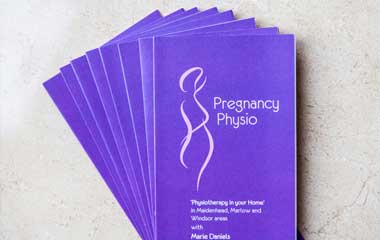
Ligament Sprain
A sprained ankle is a very common injury and typically occurs when the ankle turns inwards (inversion sprain) whereby the ligaments on the outer side of the ankle are sprained and forced beyond their normal range of motion. This can stretch or tear the tough bands of tissue (ligaments) that help to stabilise your ankle bones together. Symptoms often include pain, especially when weight bearing, swelling, bruising and restricted range of motion.
Physiotherapy can accelerate the healing process and help with:
- Advice on ice, elevation and anti-inflammatory medication
- Soft tissue techniques and massage to promote healing
- Ultrasound to stimulate blood flow and reduce inflammation
- Taping to provide ankle support and stability
- An exercise programme to restore movement, strength and stability
Those who do not seek advice and early rehabilitation, are more at risk of suffering recurrent sprains in the future.
Plantar Fasciitis
Plantar fasciitis refers to inflammation of the plantar fascia which is a part of your foot that connects your heels bone to your toes. Pain is often felt around the heel and arch of your foot. It may be worse in the morning. It is most commonly caused by repetitive strain to the plantar fascia from exercising on hard terrain, excessive running or walking, wearing shoes with poor support or being overweight.
Physiotherapy can help with:
- Advice on ice, anti-inflammatories and appropriate footwear
- Soft tissue manipulation and massage
- Ultrasound to stimulate blood flow and accelerate the healing
- Taping for pain relief when walking
- Stretching of the plantar fascia and calf muscles
Achilles Tendinopathy
Achilles tendinopathy is a condition that causes pain, swelling and stiffness of the Achilles tendon. It is thought to be caused by repeated tiny injuries (known as microtrauma) to the Achilles tendon. After each injury, the tendon does not heal completely, as should normally happen. This means that over time, damage to the Achilles tendon builds up and Achilles tendinopathy can develop.
Examples of how this might occur are overuse of the Achilles tendon eg with runners, dancers, tennis players, or training errors eg wearing inappropriate or unsupportive footwear, training on hard ground or rapidly increasing the intensity of your training.
Physiotherapy can help with:
- Soft tissue therapy
- Advice on exercises to stretch tight muscles and strengthen weak muscles
- Training advice and advice on footwear and insoles
Shin Splints (medial tibial stress syndrome)
Shin splints are a common overuse injury which typically occurs in athletes (especially runners), dancers and the military (running/marching), people who have started a new exercise regime and have progressed their sport or activity too quickly and people who have faulty biomechanics (flat feet or high arches). It is caused by repeated stress on your shinbone and the connective tissues that attach muscles to your bones resulting in pain and inflammation. Pain tends to be located along the inner border of the tibia, where muscles attach to the bone. Most people respond to rest and ice, however, if left untreated, shin splints do have the potential to develop into tibial stress fracture.
Physiotherapy can help with:
- Advice on rest, ice, anti inflammatories and training
- Advice on footwear and insoles with a possible referral to a podiatrist
- Soft tissue manipulation and massage
- Ultrasound
- Taping
- Acupuncture for pain relief
- Stretching of the plantar fascia and calf muscles and strengthening advice of core/glutes
Ankle Instability
Ankle instability is a condition characterised by repeated ‘giving way’ of the ankle or a wobbly feeling usually on the lateral or outer side of the ankle and will often occur during sports and walking. It may be accompanied by swelling, tenderness and pain. The outer ligaments have three components which stop the ankle from rolling and sliding forward. These ligaments are attached to the fibula (small bone next to the shin bone) and the talus (the ankle bone) and calcaneus (heel bone). An ankle sprain stretches and tears these ligaments and if the sprain doesn’t heal properly, ankle instability can develop.
Physiotherapy can help with:
- Acute pain management with soft tissue massage, ultrasound and acupuncture
- Strengthening exercises around the ankle and improving core/glute function
- Referral to a podiatrist for moulded insoles if your foot shape makes you prone to extra stress on the ankle ligaments
- Referral to a foot and ankle specialist for possible surgery if ankle instability fails to improve with physiotherapy








